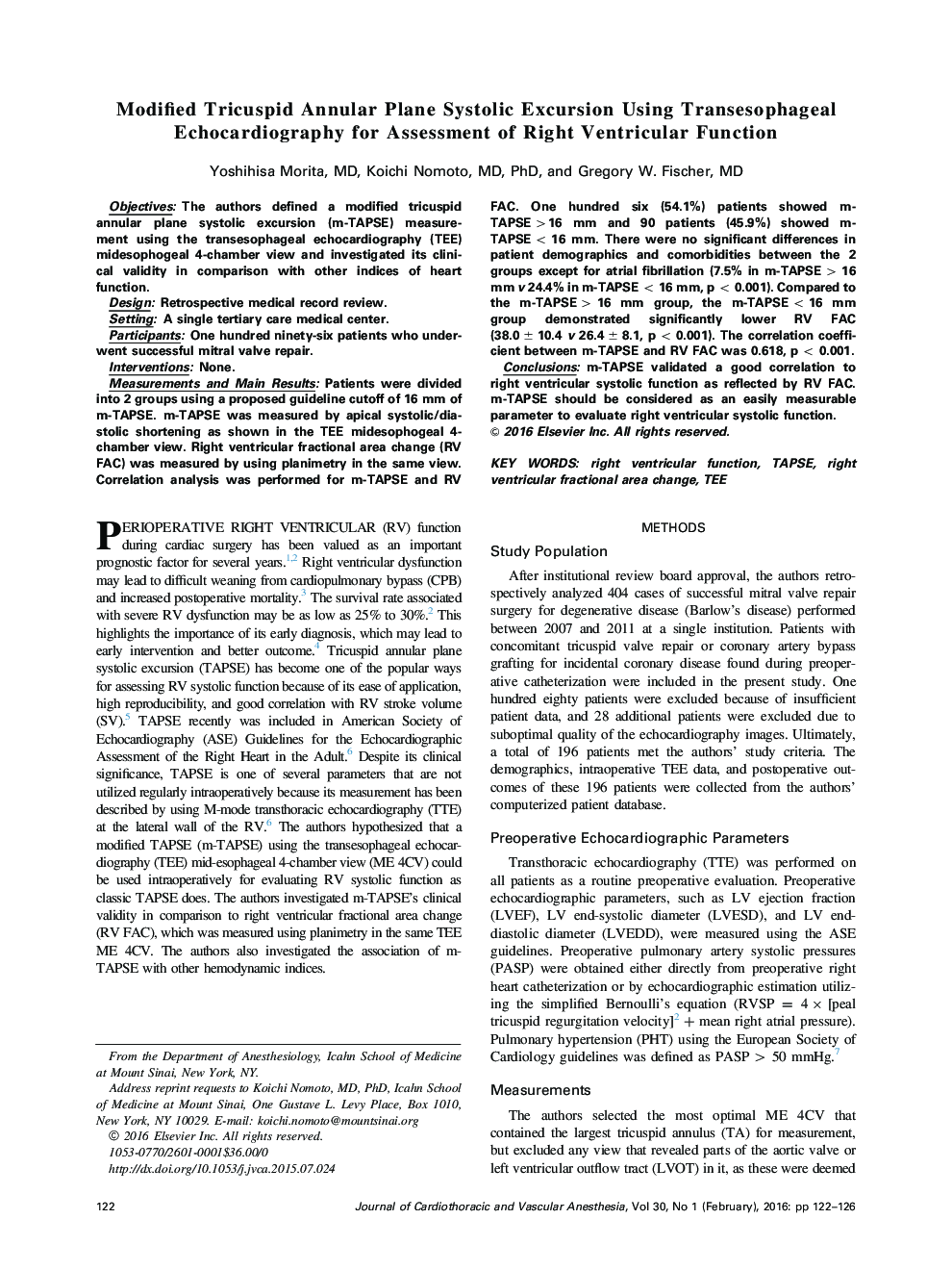| Article ID | Journal | Published Year | Pages | File Type |
|---|---|---|---|---|
| 2759094 | Journal of Cardiothoracic and Vascular Anesthesia | 2016 | 5 Pages |
ObjectivesThe authors defined a modified tricuspid annular plane systolic excursion (m-TAPSE) measurement using the transesophageal echocardiography (TEE) midesophogeal 4-chamber view and investigated its clinical validity in comparison with other indices of heart function.DesignRetrospective medical record review.SettingA single tertiary care medical center.ParticipantsOne hundred ninety-six patients who underwent successful mitral valve repair.InterventionsNone.Measurements and Main ResultsPatients were divided into 2 groups using a proposed guideline cutoff of 16 mm of m-TAPSE. m-TAPSE was measured by apical systolic/diastolic shortening as shown in the TEE midesophogeal 4-chamber view. Right ventricular fractional area change (RV FAC) was measured by using planimetry in the same view. Correlation analysis was performed for m-TAPSE and RV FAC. One hundred six (54.1%) patients showed m-TAPSE>16 mm and 90 patients (45.9%) showed m-TAPSE<16 mm. There were no significant differences in patient demographics and comorbidities between the 2 groups except for atrial fibrillation (7.5% in m-TAPSE>16 mm v 24.4% in m-TAPSE<16 mm, p<0.001). Compared to the m-TAPSE>16 mm group, the m-TAPSE<16 mm group demonstrated significantly lower RV FAC (38.0±10.4 v 26.4±8.1, p<0.001). The correlation coefficient between m-TAPSE and RV FAC was 0.618, p< 0.001.Conclusionsm-TAPSE validated a good correlation to right ventricular systolic function as reflected by RV FAC. m-TAPSE should be considered as an easily measurable parameter to evaluate right ventricular systolic function.
